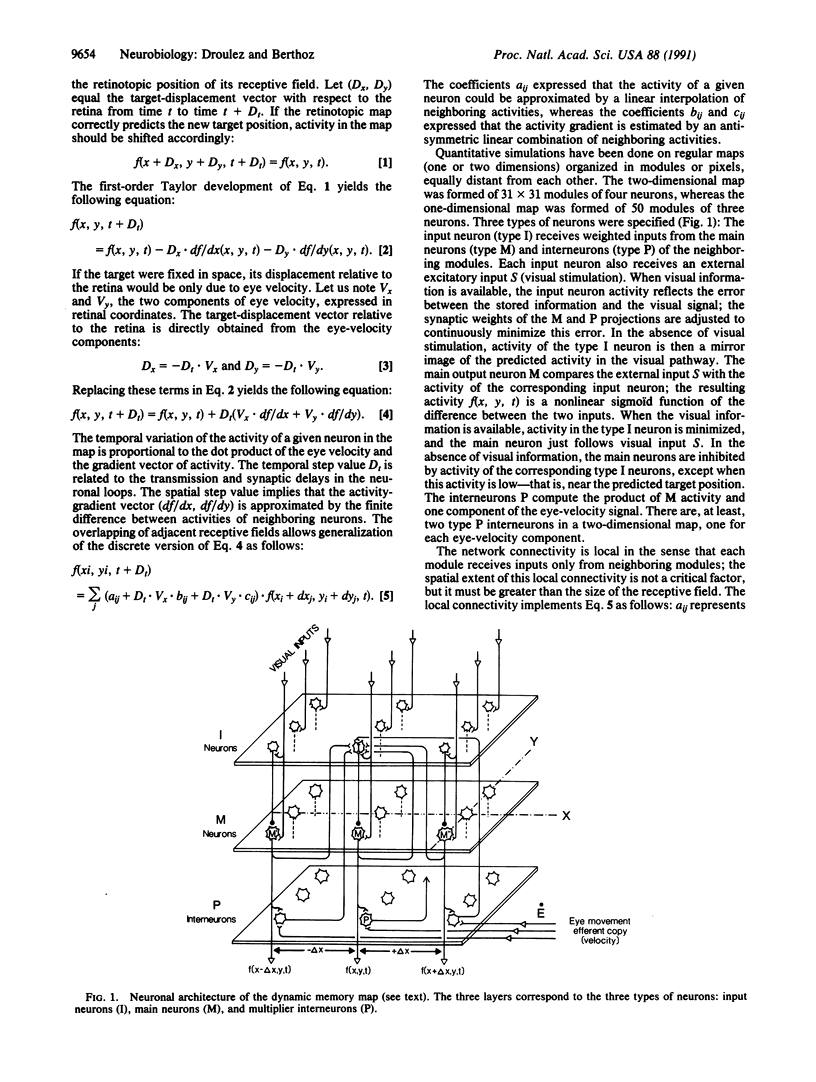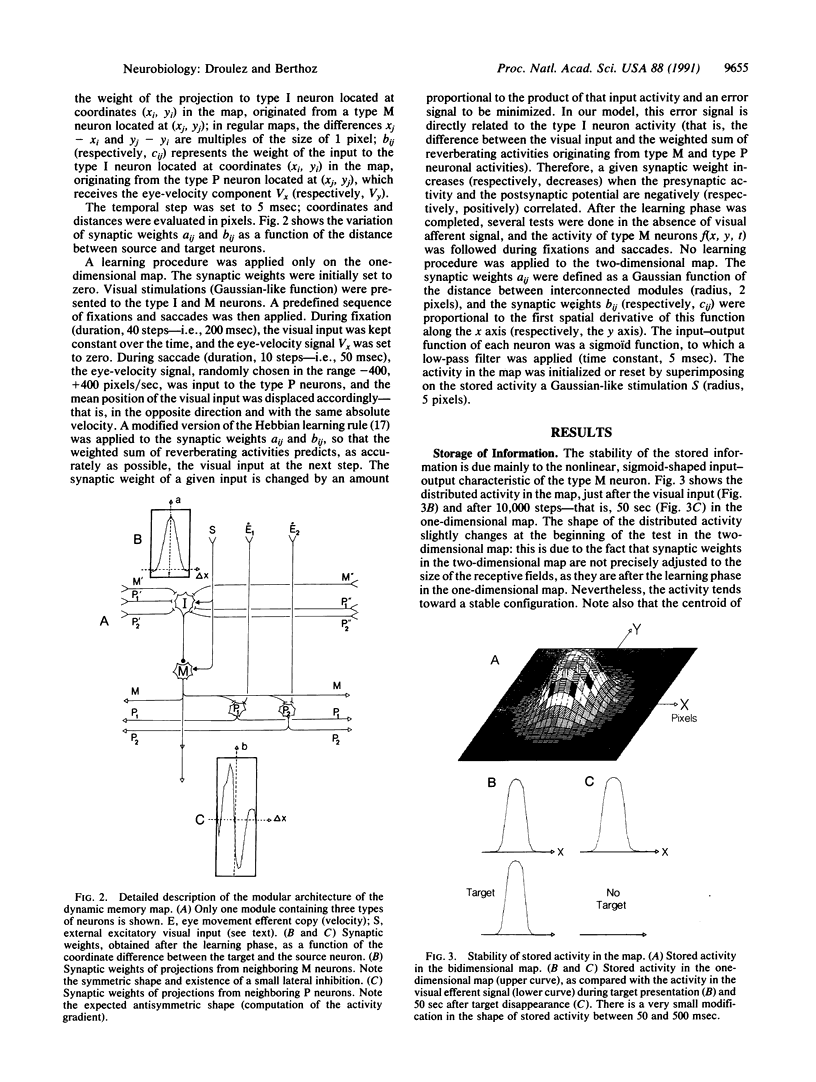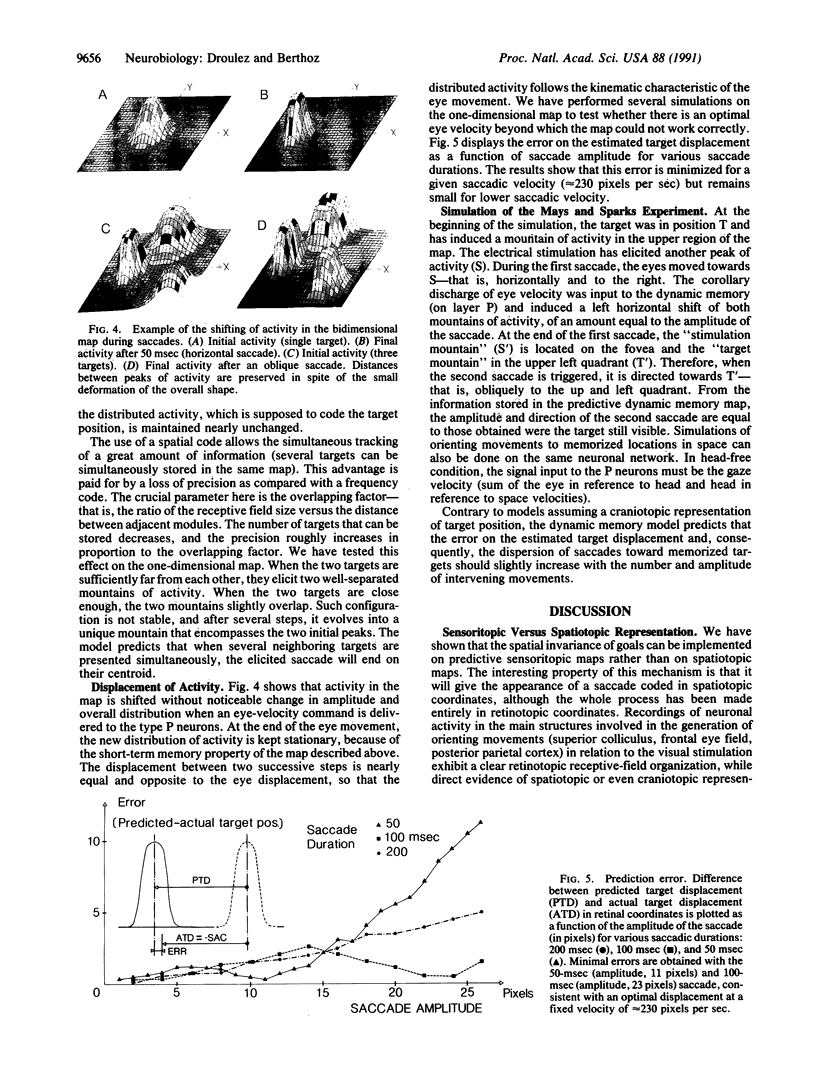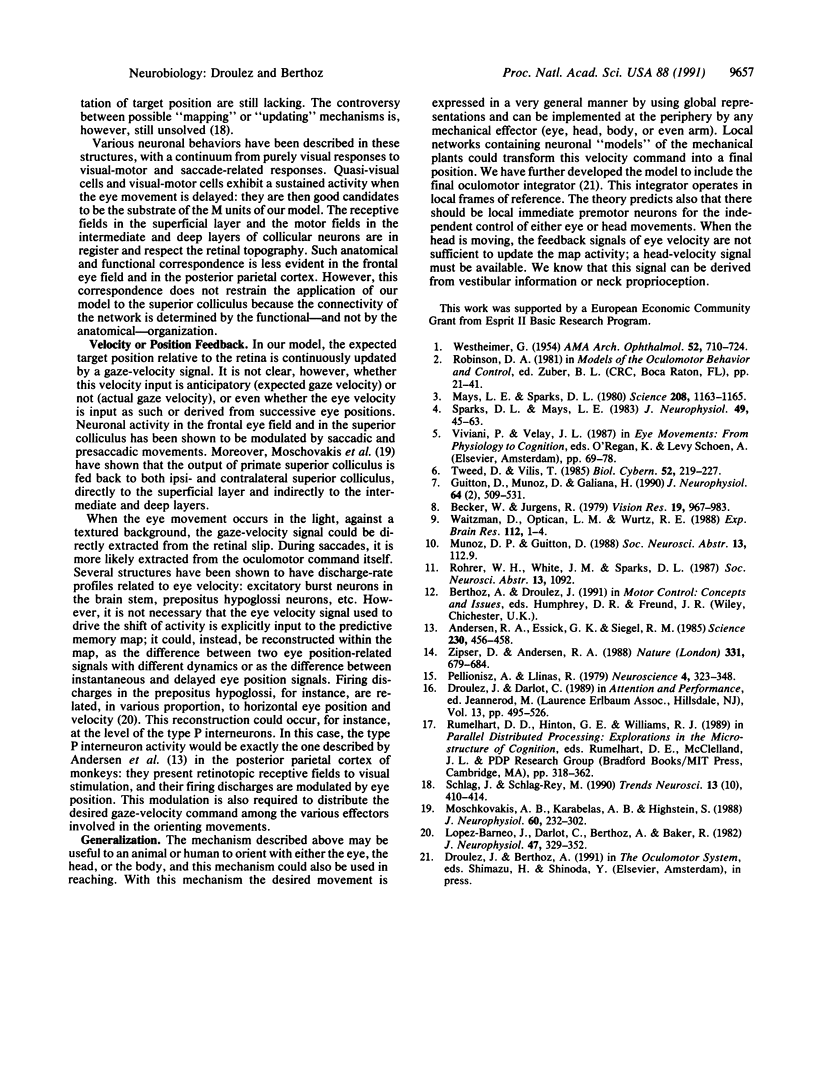Abstract
Coordinated orienting movements can be accurately performed without direct sensory control. Ocular saccades, for instance, have been shown to be reprogrammed after target disappearance when an intervening eye movement is electrically triggered before the saccade onset. Saccadic eye movements can also be executed toward memorized targets, even when the subject has been passively moved in darkness. Two hypotheses have been proposed to account for this goal-invariance property: either (i) the goal is reconstructed and memorized in the stable frame of reference linked to the environment ("allocentric, coordinates") or (ii) the goal is selected and memorized in the sensors-related maps ("egocentric coordinates") and is continuously updated by efferent copies of the motor commands. In this paper, we shall describe a formal neural network based on this second hypothesis. The results of the simulation show that target position can be memorized and accurately updated in a topologically ordered map, using a velocity-signal feedback. Moreover, this network has been submitted to a simple learning procedure by using the intermittent visual recurring afferent signal as the teaching signal. A similar mechanism could be involved in control of limb movement.
Full text
PDF




Images in this article
Selected References
These references are in PubMed. This may not be the complete list of references from this article.
- Andersen R. A., Essick G. K., Siegel R. M. Encoding of spatial location by posterior parietal neurons. Science. 1985 Oct 25;230(4724):456–458. doi: 10.1126/science.4048942. [DOI] [PubMed] [Google Scholar]
- Becker W., Jürgens R. An analysis of the saccadic system by means of double step stimuli. Vision Res. 1979;19(9):967–983. doi: 10.1016/0042-6989(79)90222-0. [DOI] [PubMed] [Google Scholar]
- Guitton D., Munoz D. P., Galiana H. L. Gaze control in the cat: studies and modeling of the coupling between orienting eye and head movements in different behavioral tasks. J Neurophysiol. 1990 Aug;64(2):509–531. doi: 10.1152/jn.1990.64.2.509. [DOI] [PubMed] [Google Scholar]
- Lopez-Barneo J., Darlot C., Berthoz A., Baker R. Neuronal activity in prepositus nucleus correlated with eye movement in the alert cat. J Neurophysiol. 1982 Feb;47(2):329–352. doi: 10.1152/jn.1982.47.2.329. [DOI] [PubMed] [Google Scholar]
- Mays L. E., Sparks D. L. Saccades are spatially, not retinocentrically, coded. Science. 1980 Jun 6;208(4448):1163–1165. doi: 10.1126/science.6769161. [DOI] [PubMed] [Google Scholar]
- Moschovakis A. K., Karabelas A. B., Highstein S. M. Structure-function relationships in the primate superior colliculus. II. Morphological identity of presaccadic neurons. J Neurophysiol. 1988 Jul;60(1):263–302. doi: 10.1152/jn.1988.60.1.263. [DOI] [PubMed] [Google Scholar]
- Pellionisz A., Llinás R. Brain modeling by tensor network theory and computer simulation. The cerebellum: distributed processor for predictive coordination. Neuroscience. 1979;4(3):323–348. doi: 10.1016/0306-4522(79)90097-6. [DOI] [PubMed] [Google Scholar]
- Schlag J., Schlag-Rey M. Colliding saccades may reveal the secret of their marching orders. Trends Neurosci. 1990 Oct;13(10):410–415. doi: 10.1016/0166-2236(90)90122-q. [DOI] [PubMed] [Google Scholar]
- Sparks D. L., Mays L. E. Spatial localization of saccade targets. I. Compensation for stimulation-induced perturbations in eye position. J Neurophysiol. 1983 Jan;49(1):45–63. doi: 10.1152/jn.1983.49.1.45. [DOI] [PubMed] [Google Scholar]
- Tweed D., Vilis T. A two dimensional model for saccade generation. Biol Cybern. 1985;52(4):219–227. doi: 10.1007/BF00336978. [DOI] [PubMed] [Google Scholar]
- WESTHEIMER G. Mechanism of saccadic eye movements. AMA Arch Ophthalmol. 1954 Nov;52(5):710–724. doi: 10.1001/archopht.1954.00920050716006. [DOI] [PubMed] [Google Scholar]
- Zipser D., Andersen R. A. A back-propagation programmed network that simulates response properties of a subset of posterior parietal neurons. Nature. 1988 Feb 25;331(6158):679–684. doi: 10.1038/331679a0. [DOI] [PubMed] [Google Scholar]







